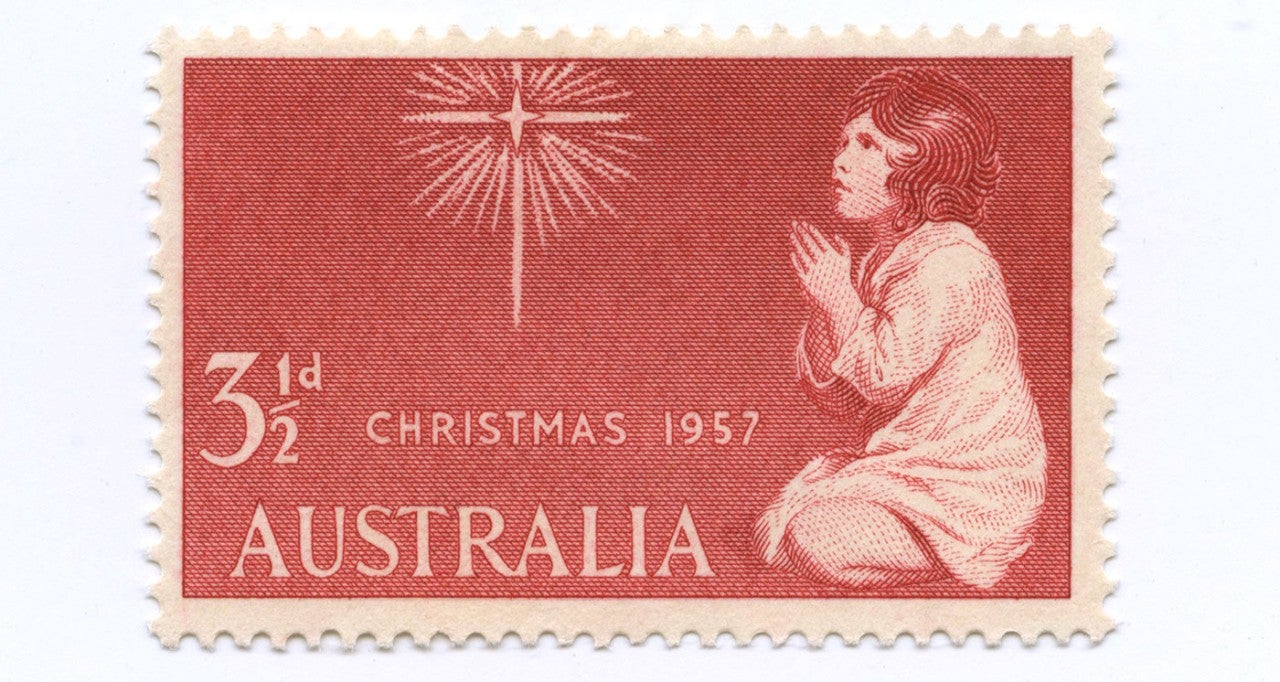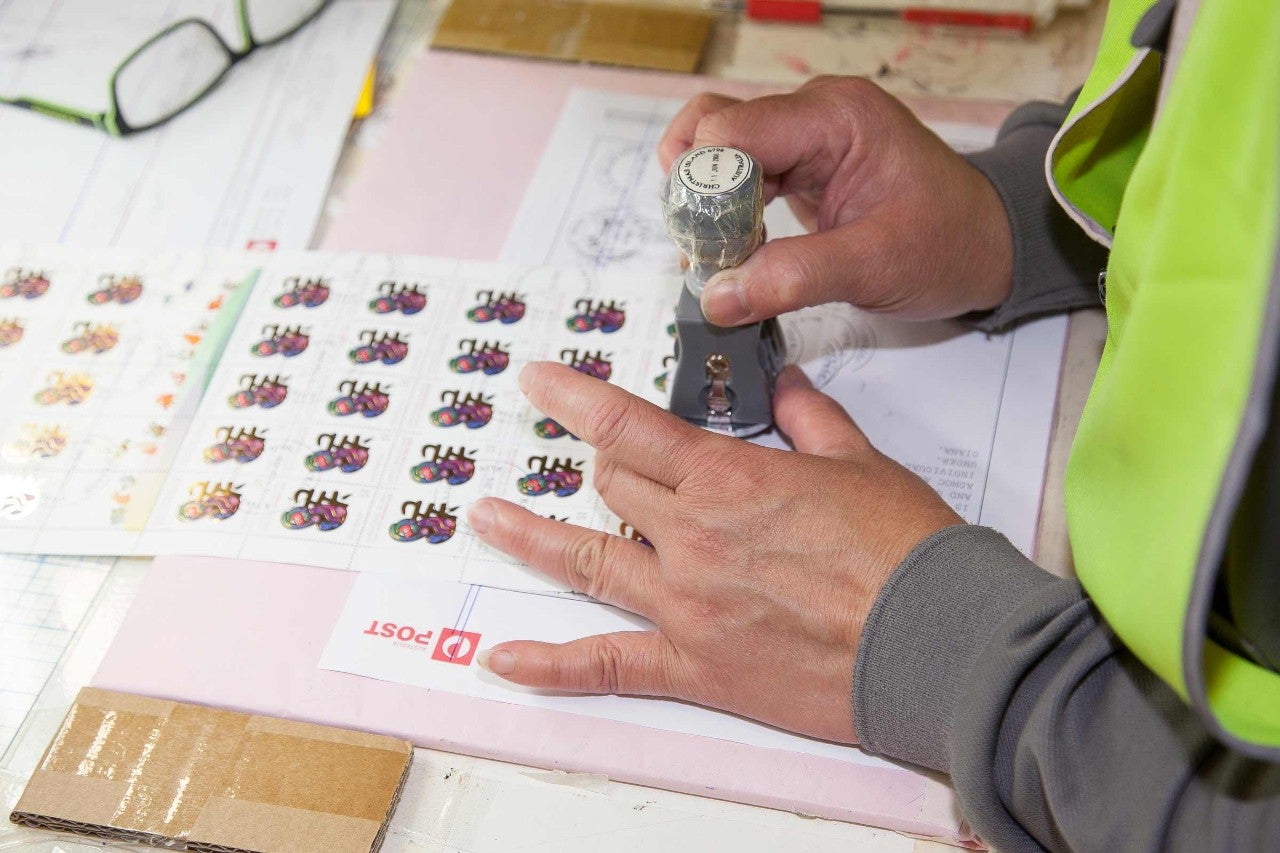
11 November 2015 | 3 mins
Stamp collecting is like a whole other language, and you’ve probably already come across words and phrases that seem pretty alien. But fear not, this is your handy guide to translating the most common terms, so you’re never left baffled again.
Let’s start with the different characteristics of stamps you’ll come across as you’re browsing and buying when you start and continue growing your collection.
When you hear the term mint stamp, it doesn’t mean its edible! It is, as the name suggests, in mint condition, meaning it hasn’t been used for postage or otherwise and so is completely intact and untouched since it was issued. Many collectors often favour these for their perfect condition and higher value.
Another characteristic you’ll notice if you look closely at different stamps is that the edges – or perforations – vary in unique ways, and these variations have names. An imperforate stamp is one that’s smooth on all sides, so it doesn’t have any little perforations or holes usually used to help separate stamps from one another. You can get stamps that are fully imperforate or semi-imperforate with some perforations along their edges. Both are valued by collectors because they’re unique compared to everyday stamps which are usually fully perforated.
The perforations will also help you find out something else special about a stamp – whether it’s self-adhesive or gummed (again, not edible!). Self-adhesive stamps have a back that you peel and stick, and the perforations are die cut to almost any shape; currently they are flat at the top and bottom and wavy on the sides. Whereas gummed stamps have a back you need to lick to stick, and the perforations are identical tiny holes all the way around. Either way, both are collected by philatelists.
Another aspect of stamps are the markings that can be appear on them, either when you buy a new stamp for your collection or when you send one.
Much like buying designer clothes and jewellery online, collectors also want to be sure they know the authenticity and condition of the stamps they buy. That’s why in 2008, as part of our CI Lunar New Year 2008 Year of the Rat PNC (Postal and Numismatic Cover), we introduced our Seal of Authenticity. This is an Australia Post branded sticker you can find on the back of a stamp with its unique DNA authenticity and certification number, so you’re sure it’s an official Australia Post product.
There are also other markings that can help you identify the condition of a stamp. A first day of issue (FDI) Postmark is a special black inked marking pressed onto a stamp on its day of issue and release for public use. It’s applied to every stamp on real mail going through the Australian postage system, but many collectors value these markings and like to pair up their new stamp and its unique Postmark in their collection. When this happens, it’s called cancelled to order (CTO) which means a stamp has been Postmarked but without being used for posting mail.
As unique and eye-catching as each individual stamp is on its own, there are also special packs and cards for presentation and display that add that little extra touch of beauty for collectors. We’ll break down a few of the most popular.
Remember mint stamps from earlier? Well, you can get a presentation set of them in what’s called a stamp pack. They’re produced for all issues of two or more stamps and can even contain a miniature sheet. Collectors are big fans of these packs because the stamps are kept in their original packaging with see-through mounts for display and presentation and come with interesting extra info on the issue. You can check out our stamp packs in more detail and purchase our latest in our shop.
Another stamp style we spoke about earlier – the self-adhesive stamp – can also come as part of a set called a collector pack with several of the stamps cut from a roll of 100 or 200 prints (stamps are printed in rolls, rather than individually), along with the different message tabs that appear on rolls that contain details about the issue.
For the ultimate picture-perfect presentation of a stamp, you need to know about the maxicard (or maximum card) which is a special type of souvenir postcard released with every new Australian stamp issue. It has the new stamp, with its FDI Postmark printed on it, placed on top of a matching illustration or picture on the front of the card – with all three elements showcasing the issue’s theme in all its glory. Not only are they loved by collectors, but they can also actually be posted anywhere in the world if you wish, since the back of the card has a postage paid imprint with space for a message and address. You can also get a standard postcard with the stamp issue printed as an image on the front picture side, and pre-paid postage on the back. Why not shop our latest Australia Post maxicards and postcards, and see the difference for yourself.
Remember, learning the lingo is all part of the joy of your collecting journey, so don’t expect to know these terms off by heart right away. You can jump back into this article any time you need to refresh your memory. We’d also recommend joining our collecting community, reading more of our articles, and exploring different stamps in our shop to get more familiar with the language. You’ll be talking the talk in no time!
This content was produced at the time of publication and will not be updated.

11 November 2015 | 3 mins

07 December 2015 | 8 mins

30 May 2016

18 September 2025 | 13 mins